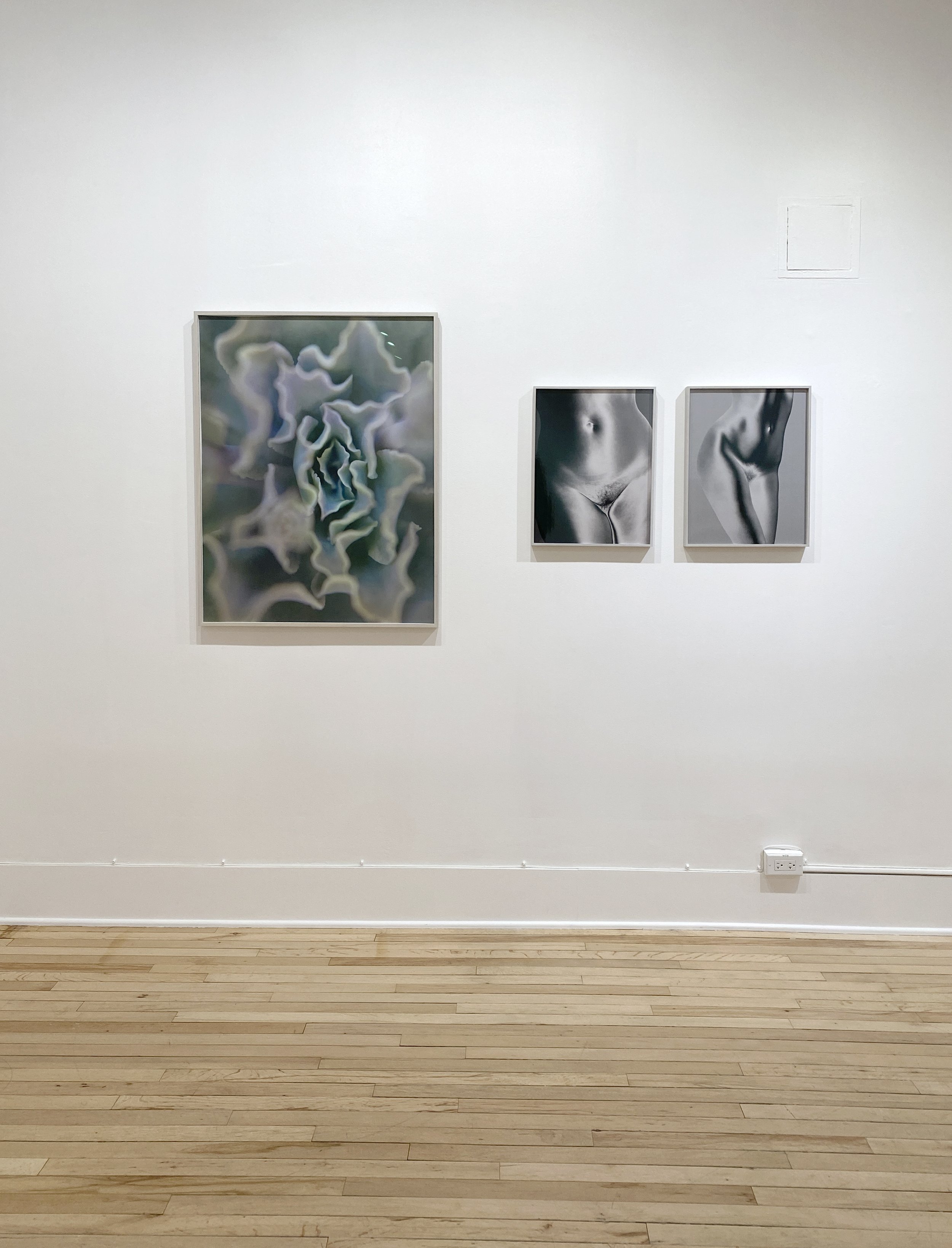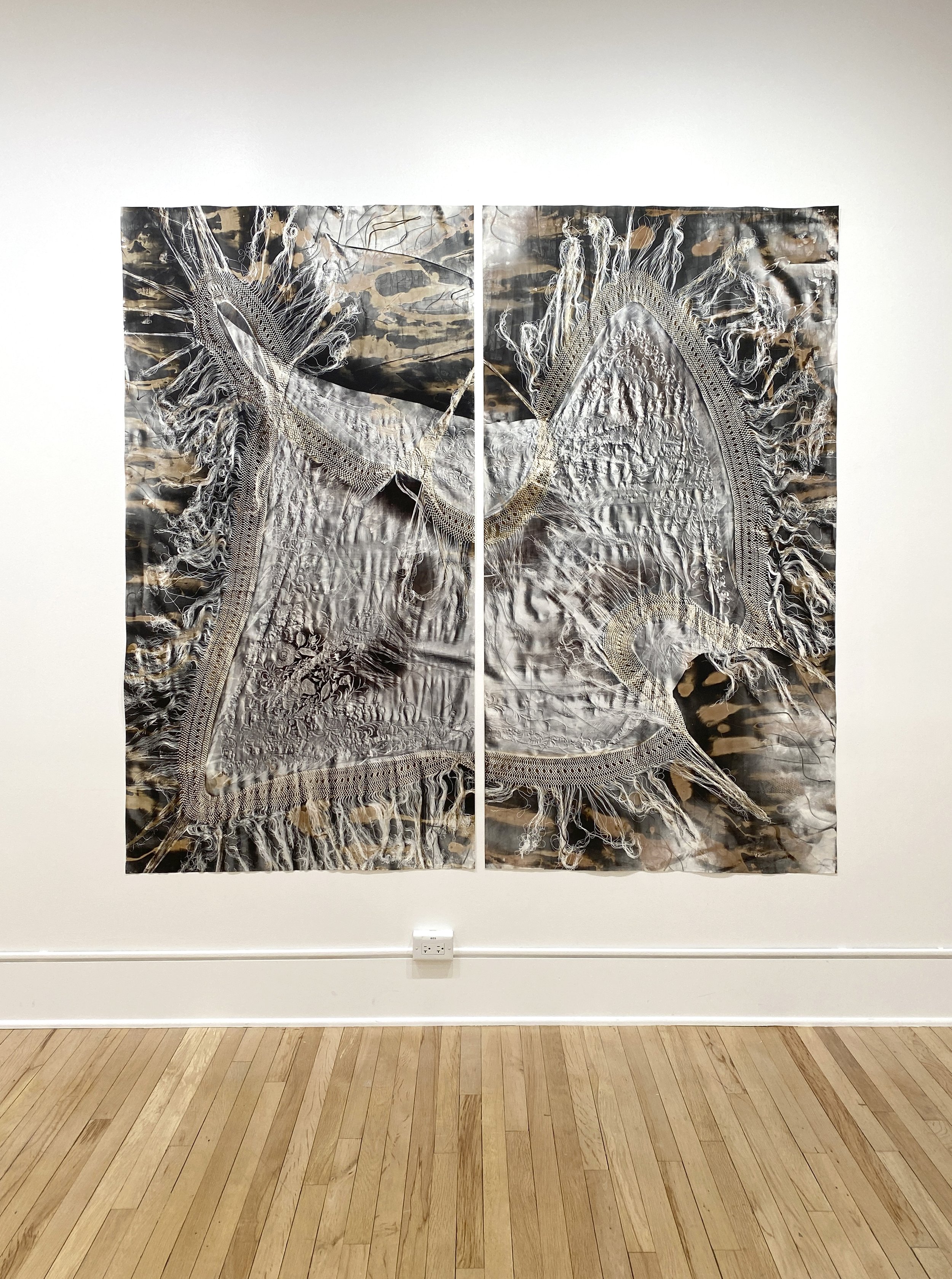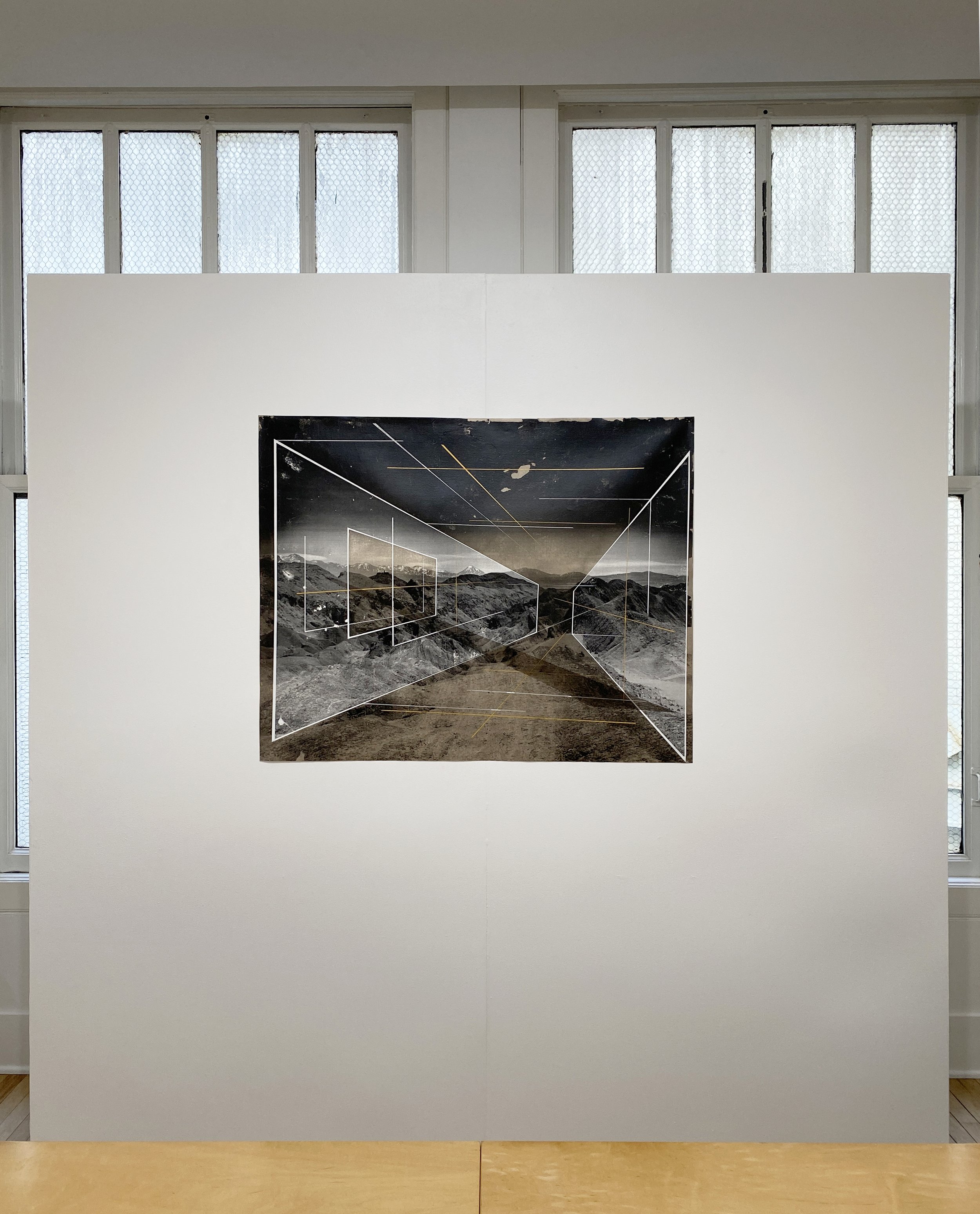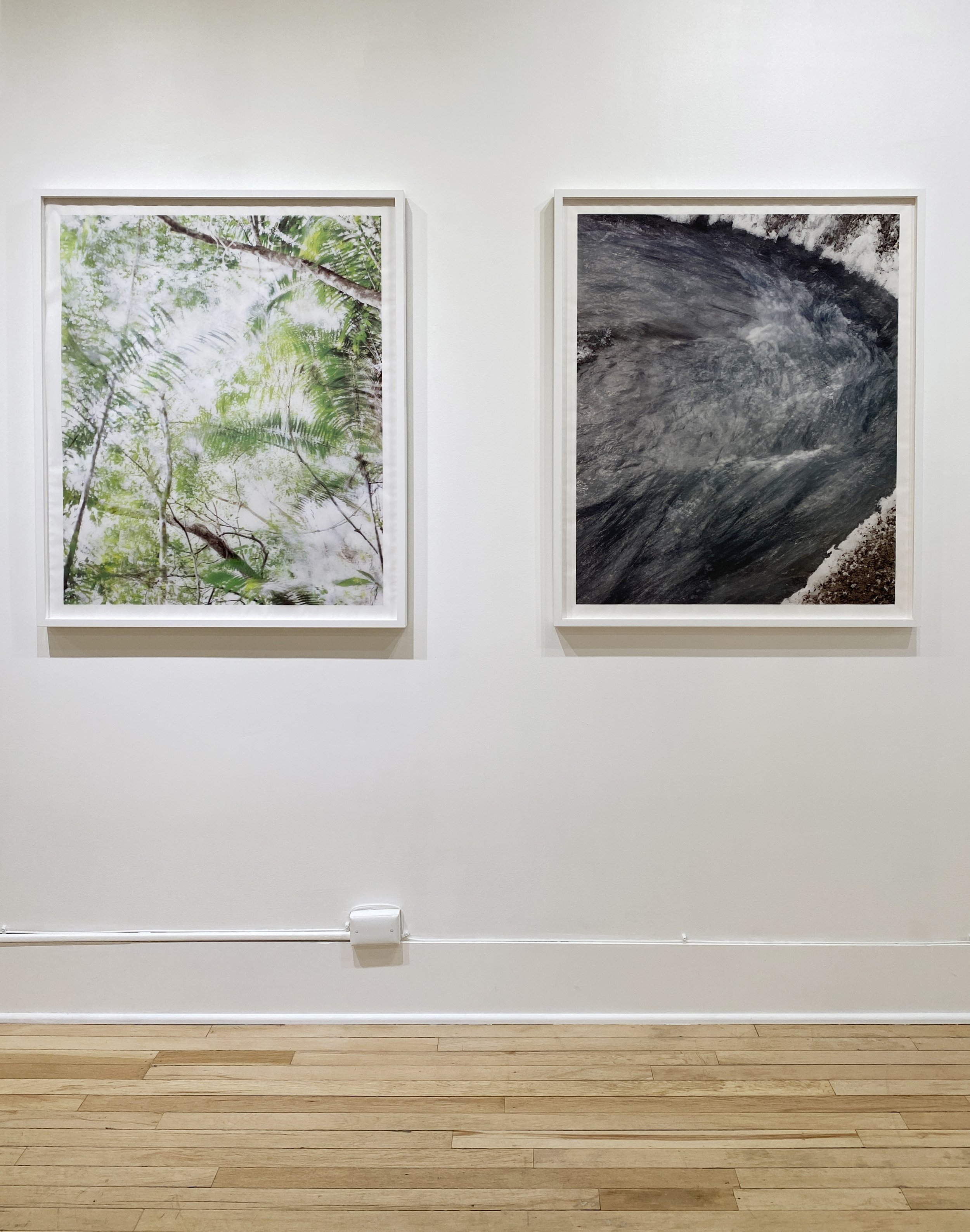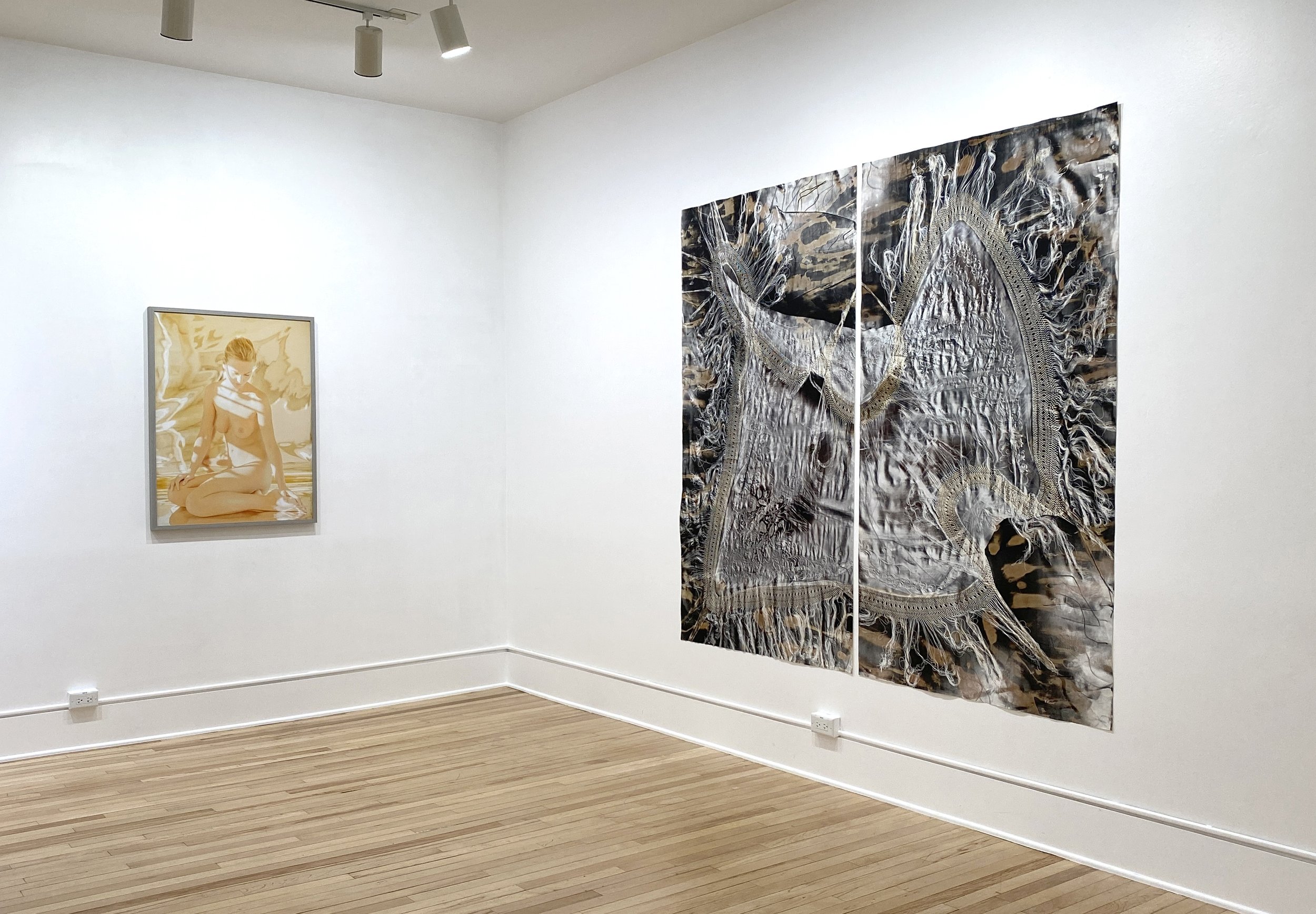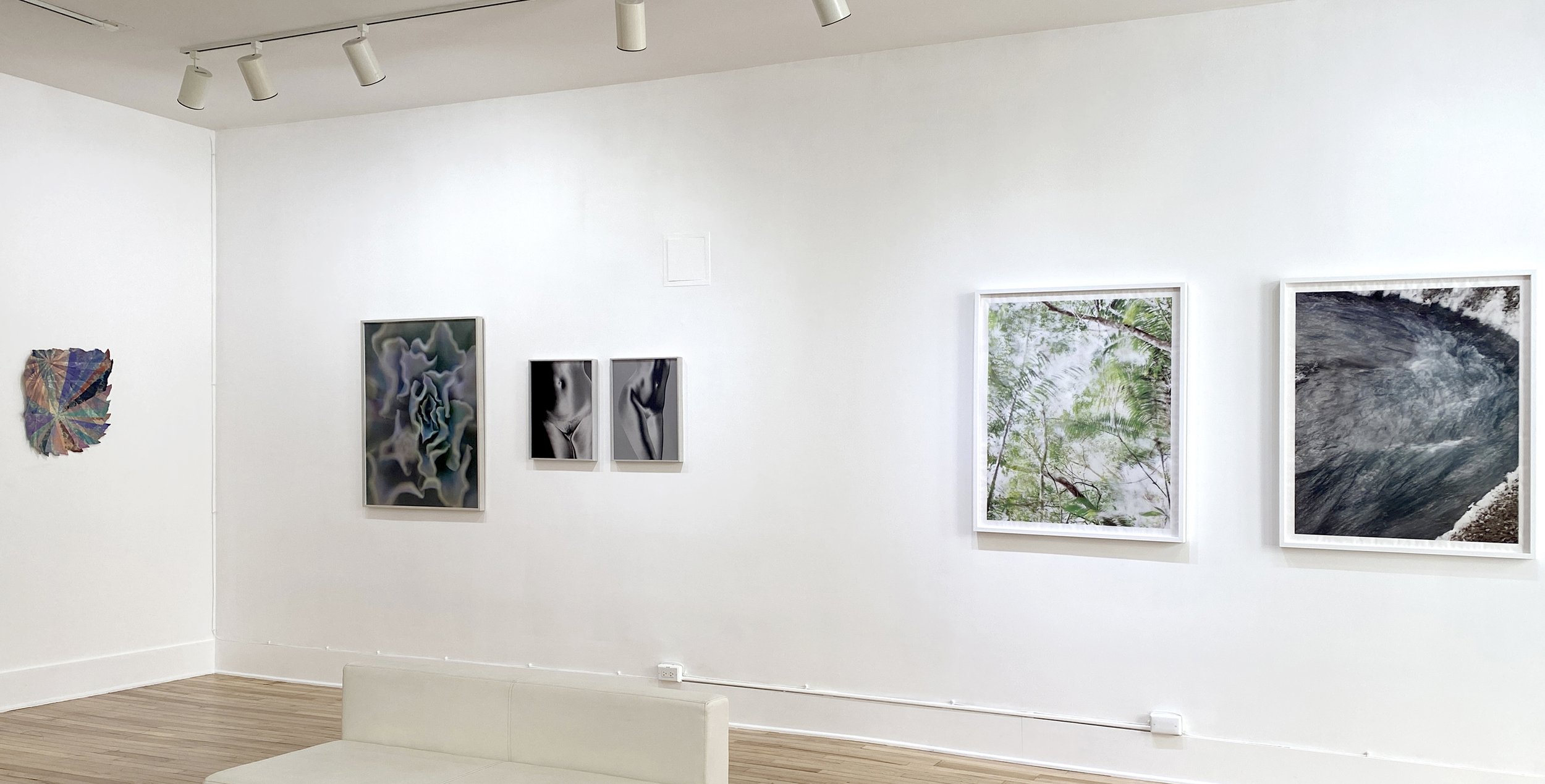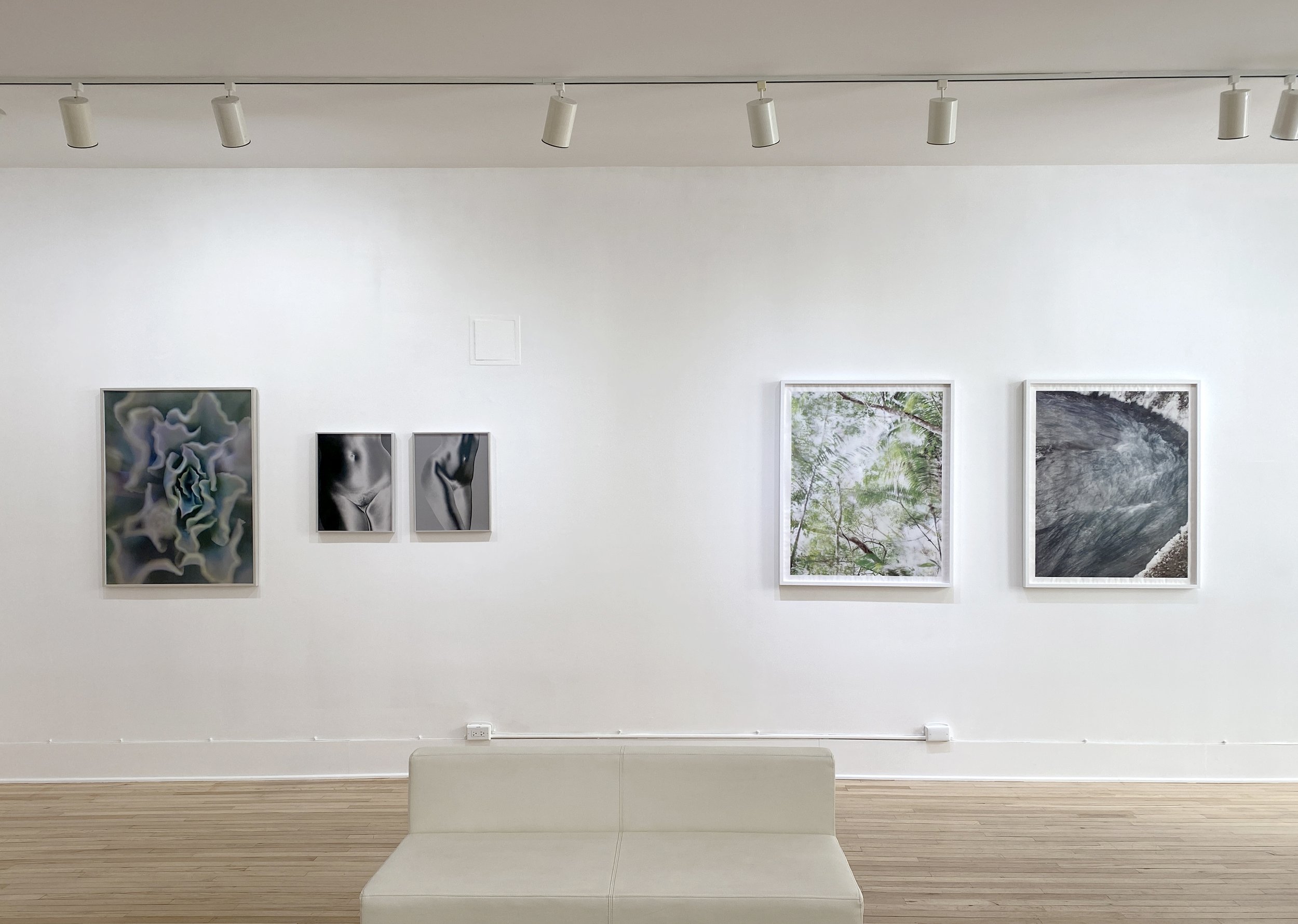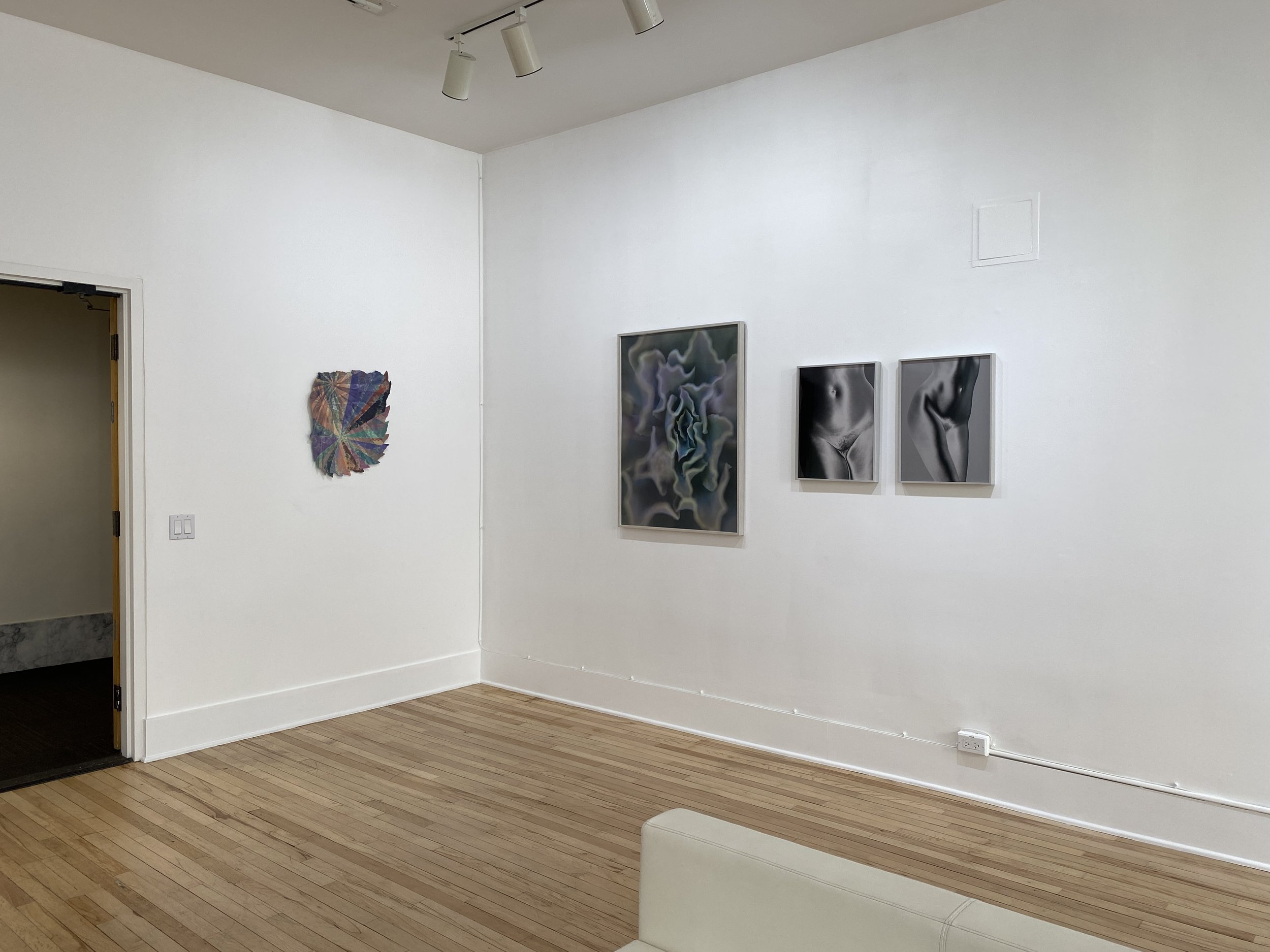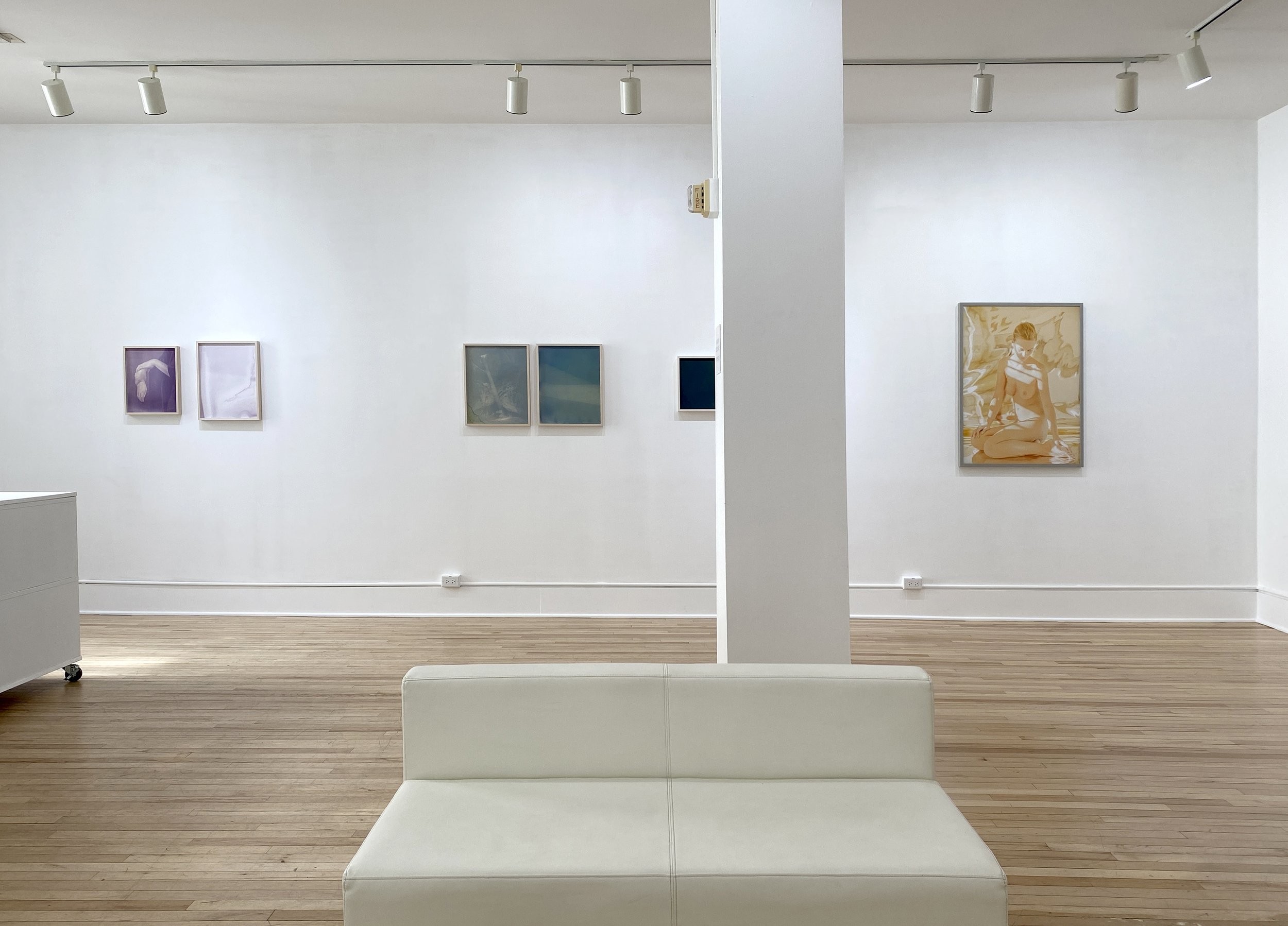P A S T E X H I B I T I O N
A Group Show
January 30, 2024 - March 30, 2024
EUQINOM Gallery is delighted to announce its upcoming group show featuring the works of prominent contemporary artists. The exhibition, running from January 30 to March 9, 2024, will showcase a diverse range of artistic expressions, highlighting the talent and innovation of the participating artists: Christine Elfman, Christina Seely, Julia Goodman, Klea McKenna, Mona Kuhn, and Rodrigo Valenzuela.
Photographs embody the tension between fixing and fading especially well. While we tend to say they freeze time, photographs show us how impossible it is to ever fully capture something. When we look at the subject of a photograph, we know that it has changed since the picture was taken. We might literally be looking at a thing in the picture, but what we experience is the time and space between it and us. Photography makes distance visible.
We photograph to define, hold, and capture things. However, actual photographs remind us of everything left undescribed and unknown. Early photographers were obsessed with fixing the image, so it would last forever. Yet experience shows us that the more you try to hold something still, the more it’s ruined. Taking a picture is like catching a bird for a collection, or turning a person into a statue. The subject matter of my work reflects this desire for security. However, the materiality of the prints acknowledges the necessity of change. This ruin - the fading - is the subject, medium, and fate of my photographs. And in their fading, they’re living, changing slowly, imperceptibly over time.
These fading pictures embody the constant transformation of objects, images, and memory. Using the anthotype process, the images develop slowly: sitting outside for a month, the sun bleaches paper saturated with light-sensitive plant dyes. Once complete, these unfixable photographs slowly disappear, as they continue to fade from the light that allows them to be seen.
Christine Elfman (b. 1981, Doylestown, Pennsylvania) makes photographs that explore the unity of opposites such as stillness and change, intimacy and distance, visibility and the unknown. Many of her images are made out of their own disappearance, through week long exposures in the sun, and cannot be fixed. She received her MFA from California College of the Arts, and BFA from Cornell University. Elfman’s photographs have been shown at the Houston Center for Photography, Texas; Penumbra Foundation, New York; Herbert F. Johnson Museum, Ithaca, NY; Everson Museum, Syracuse, NY; TILT Institute for the Contemporary Image, Philadelphia; University of the Arts, Philadelphia; and EUQINOM Gallery, San Francisco which represents her work. Her photographs have appeared in publications such as BOMB Magazine, 1000words, The San Francisco Chronicle, Photograph Magazine, and Der Greif. She has been awarded a Light Work Grant in Photography, San Francisco Artist Award, and residencies at the Penumbra Foundation, Cape Cod National Seashore, and Saltonstall Foundation. She is an Assistant Professor of Studio Art and Book Arts at Wells College in Aurora, New York.
CHRISTINA SEELY | Terra Systema
Using the roles that the arctic and tropical ecosystems play in our imagining and understanding of the planet, the work connects the singular system of self to the whole of the earth. Seely began the project in 2016 at the Smithsonian Tropical Research Station on the island of Barro Colorado in the Panama Canal, creating a series of kinetic stills, terra systema . respiro (breath) tracing the interplay of light and air within the living respiratory system of the rainforest belt. terra systema . flumen (current) explores the kinetic life of meltwater from the Greenland ice sheet, where Seely traveled over the course of two summers with a group of scientists from the Institute of Arctic Studies at Dartmouth College.
Here, she focuses on the motion of glacial water moving through its increasing intensity, from small streams of melt to cascading, ocean-bound tributaries of exponential force. In both series, the large-scale photographic works are each made up of two-layered prints: an archival vellum print on top of an archival, inkjet, base print. Together, they create a sensation of dimension and motion as the viewer moves past the image.
Christina Seely (b. 1976; Berkeley, California) has exhibited nationally and internationally and is featured in many public and private collections, including New York Public Library, The Harvard Natural History Museum, The Museum of Contemporary Photography, The West Collection, and The Walker Art Center. She has been an Artist in Residence at the Headlands Center for the Arts and Lightwork, a Fellow at the MacDowell Colony, a participant on the Arctic Circle Program, and a recipient of a year-long Public Arts Commission from the City of San Francisco. She received a 2014 Smithsonian Artist Research Fellowship, and she was a 2017 recipient of the John Gutmann Photography Fellowship. Her exhibition Next of Kin: Seeing Extinction Through An Artist’s Lens opened at the Harvard Museum of Natural History in 2017 which led with related research to a 2020 Environmental Humanities Fellowship at the University of Edinburgh in Scotland. Her solo exhibition Dissonance and Disturbance debuted at the Anchorage Museum in Alaska and she is a 2023 Guggenheim Fellow. Seely received a BA from Carleton College, an MFA in Photography from Rhode Island School of Design, and completed a self-designed Master’s in Theological Studies at Harvard Divinity School in 2023. The degree centered around the potential of contemporary art as a space of spiritual and existential holding in conversation with (Western) science as a way to build more effective climate crisis communication.
CHRISTINA SEELY, Left: Respiro 8, 2017, Right: Flumen 4, 2017, from the series, Terra Systema, Vellum + Archival Pigment Print Overlaid, Each 37.50 x 30 inches, Edition of 4 +2AP
INQUIRE
JULIA GOODMAN, In Tandem (IV), 2023, Payne’s Gray watercolor on hand formed paper. Pulp made from different color of repurposed bedsheets and t-shirts, 24 x 19.50 x 1 inches
INQUIRE
I make work at the intersection of papermaking, textiles, sculpture, and painting. I transform bedsheets and t-shirts – fabrics that lie close to bodies day and night – into large and small wallworks and suspended sculptures with vibrating colors, expanding orbits, abstracted forms, decisive edges, loose spills, torn fabrics, dirt and brick flecks, and most recently, layers of watercolor. I gather, tear, and pulp different color cotton bedsheets and t-shirts that hold personal histories. My process connects me to the Jewish mourning tradition of rending garments at the graveside, and the invisible labor of women who gathered, sorted, and tore fabrics to make rag paper centuries ago. Combining pulped discarded fabrics from various sources reflects our interconnectedness and that transformation is possible fiber by fiber, bond by bond.
In 2022, I began layering washes of watercolors on hand-formed paper. The paper forms become active and unruly foundations that are bodily, topographical, and cosmological. The fibers that constitute the support system become the lightest lights and the darkest darks. Transparent watercolors bring forward the idiosyncrasies and imperfections of each form. Pigments settle in response to irregular, undulating surfaces. Each layer is held by the paper. Each layer offers me a closer look at the stories held by the fibers. Each layer accumulates into a composition that acknowledges the gravity of our bonds.
Julia Goodman (b. 1979, Atlanta, GA) earned an MFA from California College of the Arts (2009) and a BA in International Relations and Peace & Justice Studies from Tufts University (2001). She studied art at Santa Monica College (2002-2006). Recent exhibitions include the National Museum of Women in the Arts, Washington D.C.; Contemporary Jewish Museum, San Francisco, CA; San Jose Museum of Art, San Jose, CA; DePaul Art Museum, Chicago, IL; Berkeley Art Center, Berkeley, CA; Poetry Foundation, Chicago, IL; and California College of the Arts Hubbell Street Gallery, San Francisco, CA. Her work is included in the collections of National Museum of Women in the Arts, Washington, D.C. and the DePaul Art Museum, Chicago, IL. Her residencies include JB Blunk Residency, Inverness, CA; Recology SF, San Francisco, CA; Creativity Explored, San Francisco, CA; and Salina Art Center, Salina, KS. Goodman lives and works in Berkeley with artist Michael Hall and their young child.
KLEA McKENNA, Necessary Storms (1), 2019 Photographic Relief. Unique Photogram on gelatin silver fiber paper. Sepia, selenium,and copper toned. Impression of a hand-embroidered, silk Manton de Manila or Piano Shawl. Spain (via China, Philippines, and Mexico). 1890’s, 79.50 x 82 inches
INQUIRE
Fraying fibers and unraveling embroidery imprint their flaws onto photographic paper in crystalline detail. This work and the accompanying book Generation address the history and cultures from which these fabrics originate and the stories of colonialism, migration, cultural appropriation, and women’s labor and sexuality that are embedded in them. McKenna begins each piece by thoroughly researching her subject and studying the object before poetically reinterpreting its form. Textiles carry a rich legacy of touch—from the labor of their making to signs of gradual wear, alteration, and reuse. McKenna seeks out textiles that have been deconstructed both by time and by the human hand. The act of embossing stretches the photographic paper, creating ripples and folds that intersect with the imagery of fabric. The resulting pieces reveal imperfection, emphasizing deterioration, decay, and signs of this haptic interaction.
McKenna utilizes the photogram process, a direct-contact technique whereby photographic paper physically meets its subject and records the mark of an interaction. She innovates within this technique to not only record light and shadow, but to translate touch and texture into visible imprints. In the darkness, objects are transcribed to analog light-sensitive paper using a combination of the pressure of the artist’s hand, an etching press, and a flashlight. McKenna’s “photographic reliefs” are embossed with the patterns of textiles and natural artifacts, transforming the paper into sculptural images – her own technique, which is driven by risk and experimentation.
Klea McKenna (b. 1980, Freestone, CA) is a visual artist who writes and makes films and is known for cameraless photography and her innovative use of light-sensitive materials. She is a 2023 recipient of a Guggenheim Fellowship Award for Photography. Her work is held in several public collections, including the San Francisco Museum of Modern Art, San Francisco, CA; Los Angeles County Museum of Art, Los Angeles, CA; Getty Museum, Los Angeles, CA; Santa Barbara Museum of Art, Santa Barbara, CA; United States Embassy Collection; Mead Art Museum, Amherst, MA; Museum of Fine Arts Boston, MA, and The Victoria & Albert Museum, London. She studied art at UCLA, UCSC, and California College of the Arts. Klea is the daughter of renegade ethnobotanist, Kathleen Harrison and psychedelic philosopher, Terence McKenna. She lives in San Francisco with her partner and their young children.
MONA KUHN, AD 7850 from She Disappeared Into Complete Silence, 2014, Chromogenic Print, 40 x 30 in, Edition of 8 + 2 APs
INQUIRE
She Disappeared Into Complete Silence is set inside architect Robert Stone’s secluded modernist structure by the Joshua Tree National Park, California. In this series, Kuhn and her subject, close friend and long-time collaborator Jacintha, explore pools, mirrored ceilings, and glass walls to produce sandy-colored hallucinations filled with dreamy light leaks and seductive reflections. Landscapes, architectural details, reflections and a single figure repeatedly obscured and dislocated create photographs that verge on abstraction. Kuhn playfully combines several visual strategies; patterning, translucency, and reflectivity, and conflates them with the casual closeness of a photographer and her subject.
Mona Kuhn was born in São Paulo, Brazil, in 1969, of German descent. In 1989, Kuhn moved to the US and earned her BA from Ohio State University, before furthering her studies at the San Francisco Art Institute. She is currently an independent scholar at The Getty Research Institute in Los Angeles. Occasionally, Mona teaches at UCLA and the Art Center College of Design in Pasadena. Mona Kuhn’s first monograph, Photographs, was debuted by Steidl in 2004; followed by Evidence (2007), Native (2010), Bordeaux Series (2011), Private (2014), and She Disappeared into Complete Silence (2018/19). In addition, Kuhn's monograph titled Bushes and Succulents has been published by Stanley/Barker Editions in 2018. In 2021, Thames & Hudson published a stunning career retrospective titled Works. Kuhn's most recent publication Kings Road is published by Steidl with a multi-dimensional debut exhibition at The Arts, Design & Architecture Museum, in 2022. Mona Kuhn’s work is in private and public collections worldwide, including The J. Paul Getty Museum, Los Angeles County Museum of Art, The Hammer Museum, the Perez Art Museum in Miami, the Museum of Fine Arts, Houston, and the Kiyosato Museum in Japan. Kuhn's work has been exhibited at The Louvre Museum and Le Bal in Paris, The Whitechapel Gallery and Royal Academy of Arts in London, Musée de l’Elysée in Switzerland, Leopold Museum in Vienna Austria, The Polygon Gallery in Vancouver Canada, Australian Centre for Photography and Taipei Fine Arts Museum in Taiwan. Mona Kuhn lives and works in Los Angeles.
RODRIGO VALENZUELA, New Land (Untitled 1), 2021, Unique acrylic, toner and chalk on canvas,
36.50 x 45 inches
INQUIRE
Constructing narratives, scenes, and stories that point to the tensions found between the individual and communities, Valenzuela utilizes autobiographical threads to inform larger universal fields of experience. Gestures of alienation and displacement are both the aesthetic and subject of much of his work. Often using landscapes and tableaus with day laborers or himself, he explores the way an image is inhabited and the way that spaces, objects, and people are translated into images. His work serves as an expressive and intimate point of contact between the broader realms of subjectivity and political contingency. Through his videos and photographs, he makes images that feel at the same time familiar yet distant. Valenzuela engages the viewer in questions concerning how the formation and experience of each work are situated—how they exist in and out of place.
Rodrigo Valenzuela (b. 1982, Santiago, Chile) Lives and works in Los Angeles, CA. where he is an assistant professor at University of California, Los Angeles School of Art and Architecture. Valenzuela studied art history and photography at University of Chile (2004), holds a BA in Philosophy at The Evergreen State College, Olympia, WA (2010), and an MFA at University of Washington, Seattle, WA (2012). Valenzuela is the recipient of the 2021 Guggenheim Fellowship in Photography and Smithsonian Artist Research Fellowship. He has received the Joan Mitchell Award, Art Matters Foundation Grant, and Artist Trust Innovators Award.
Recent solo exhibitions include: New Museum, NY (2019); Jordan Schnitzer Museum of Art, Eugene, OR (2018); Orange County Museum, Santa Ana, CA (2018); Portland Art Museum, Portland, OR (2018); Ulrich Museum of Art, Wichita, KS (2016); Frye Art Museum, Seattle, WA (2015). Public collections include: Whitney Museum of American Art, New York, NY; Los Angeles County Museum of Art, Los Angeles, CA; Museum of Fine Arts, Houston, TX; Frye Art Museum, Seattle, WA; and The Microsoft Art Collection, Redmond, WA.
W O R K S
I N S T A L L A T I O N
